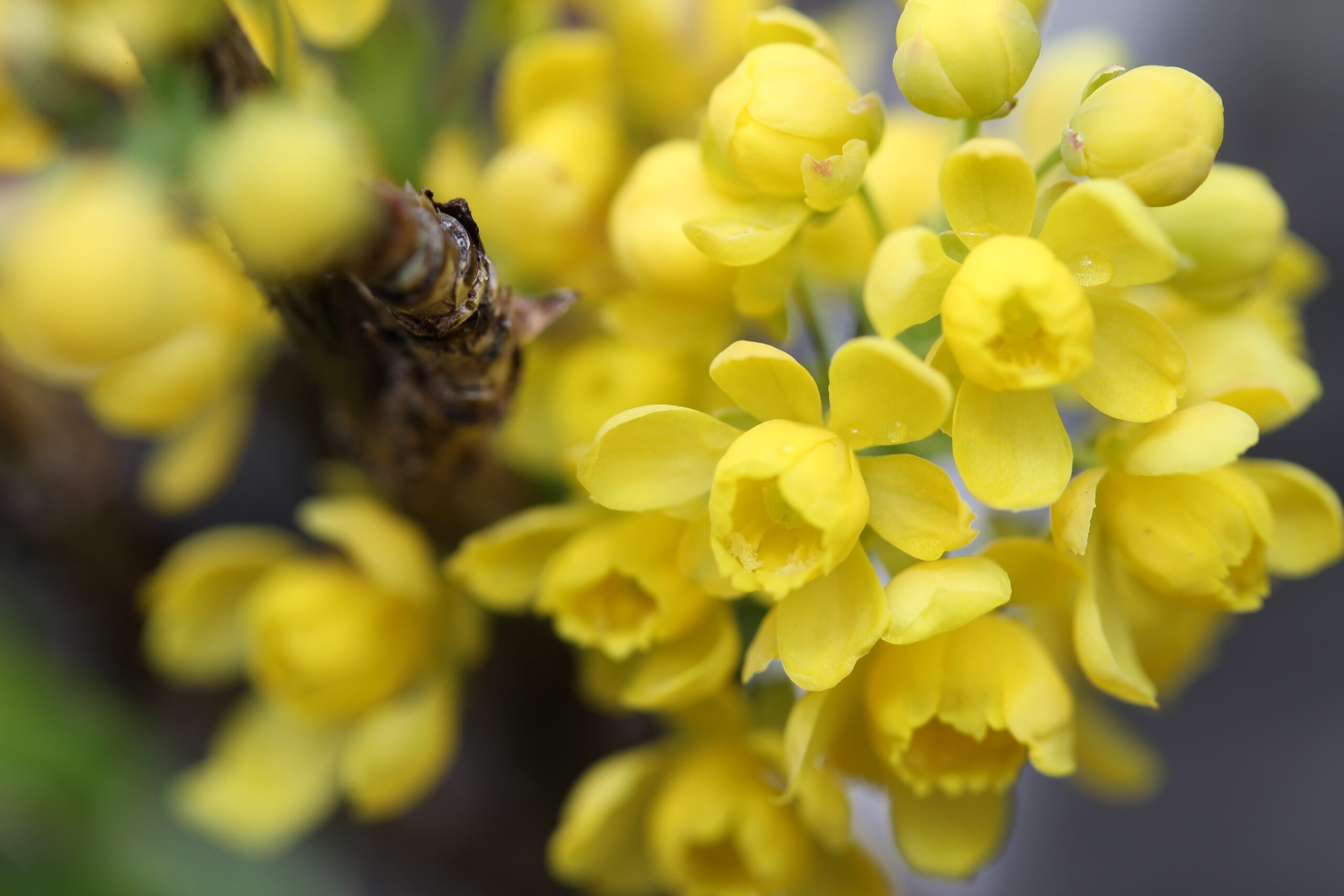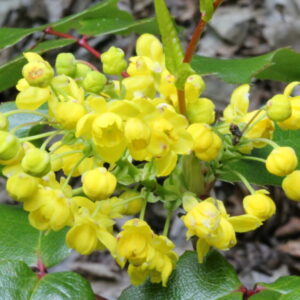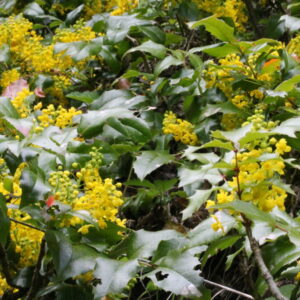
Family: Berberidaceae/ Barberry
Ecology/ Botany:
This common evergreen shrub grows in dry climatic regions or dry forest openings of moist climatic regions, usually in Interior Cedar Hemlock forest zones. It has deep green, shiny, leathery, toothed leaves that sometimes turn brilliant red. The clusters of yellow, citrusy scented blossoms in spring turn to powdery, purple, grape-like berries in late summer.
Medicinal/ Other Uses:
The roots and stems contain berberine, making them bright yellow and anti-microbial. Indigenous people have used the roots and stems to make yellow dye, and all parts as medicine for detoxification. The sour berries have been used as a remedy for poisoning, made into a jelly for meat, or eaten alone as food. The roots cleanse the soil for themselves and neighboring plants and, if taken internally, will cleanse you too. They purify the blood, liver, kidneys, and skin and support good gut flora. The flower essence has been used to help boost self-esteem without relying on what others think while also allowing loving inclusion of others and a sense of healthy community.
References/ Other useful links:
Parish, Coupe, Lloyd. 1996. Plants of Southern Interior British Columbia. B. C. Ministry of Forests and Lone Pine Publishing.
Native American Ethnobotany DB
http://store.fesflowers.com/oregon-grape.html
https://www.treefrogfarm.com/store/flower-essences-tree-essences/oregon-grape-flower-essence.html




